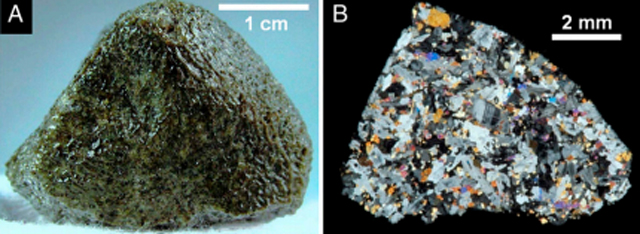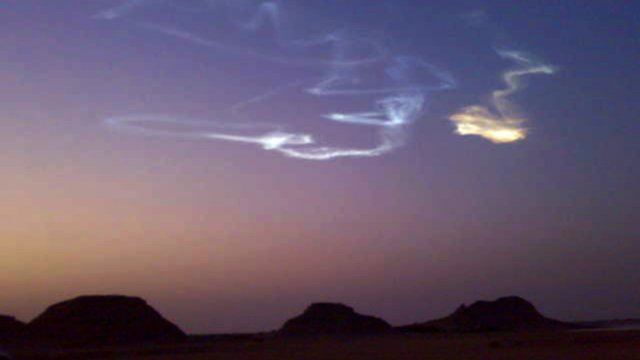Back in 2008, astronomers detected an asteroid heading straight toward Earth. For the first time ever, they tracked the rock as it veered towards our planet and exploded over the Nubian desert. Now, pieces of the recovered meteorite are beginning to reveal its secrets — like how it once harbored an active volcano.
One tiny piece of the meteorite, less than an ounce, is the subject of a new study in the journal PNAS about volcanism in the early universe. ALM-A, as it’s called, was just one of about 600 pieces recovered from that particular meteorite, but it tells an intriguing story about the universe 4.6 billion years ago.
The scientists who got their hands on ALM-A scrutinised it intensely. First, they used optical and electron microscopes to characterise the fine-grained structures of the rock. Then they ground up a tiny piece of ALM-A into powder and analysed its molecular make-up with mass spectrometry.
It turns out ALM-A is rich in silica-containing minerals that only form from rapidly cooling lava. “I would have thought that these kinds of rocks could only have formed much later, on larger bodies like Earth,” Addi Bischoffa of the University of Munster told ABC Australia, “But to have this happening on asteroids so early is fantastic.”

Left: ALM-A. Right: Thin cross-section of ALM-A. Bischoff et al. PNAS
The asteroid of which ALM-A was once a part has an interesting history even beyond volcanic activity. After analysing other pieces of the asteroid 2008 TC3, scientists reconstructed its whole violent backstory, which Francie Diep recounts in Popular Science:
ALM-A and other chemically similar meteorites found on Earth are believed to have once been part of a primitive asteroid called the Ureilite Parent Body. That’s the thing that would have been volcanic. Then, at some point, the Ureilite Parent Body collided catastrophically with another object, sending ALM-A and other bits out into space. Eventually, a mixture of gravity and electrostatic charge caused some of those pieces to re-form, along with other fragments, into the asteroid 2008 TC3. When 2008 TC3 came to visit Earth, it shattered again, this time into hundreds of pieces, miles above the surface of the Earth.
Analysing rocks is the very core of geology, but it’s still amazing to step back and appreciate what geologists can tell from just looking at tiny pieces of rock — an act that resembles scientific divination. When 2008 TC3 was streaking toward Earth six years ago, scientists were just excited to track its collision in real-time. It’s even more exciting now to realise what 2008 TC3 can tell us about the early universe. [ABC Science, Popular Science, PNAS]
Picture: The contrail of the meteorite when it hit in 2008. Shabbad/NASA
